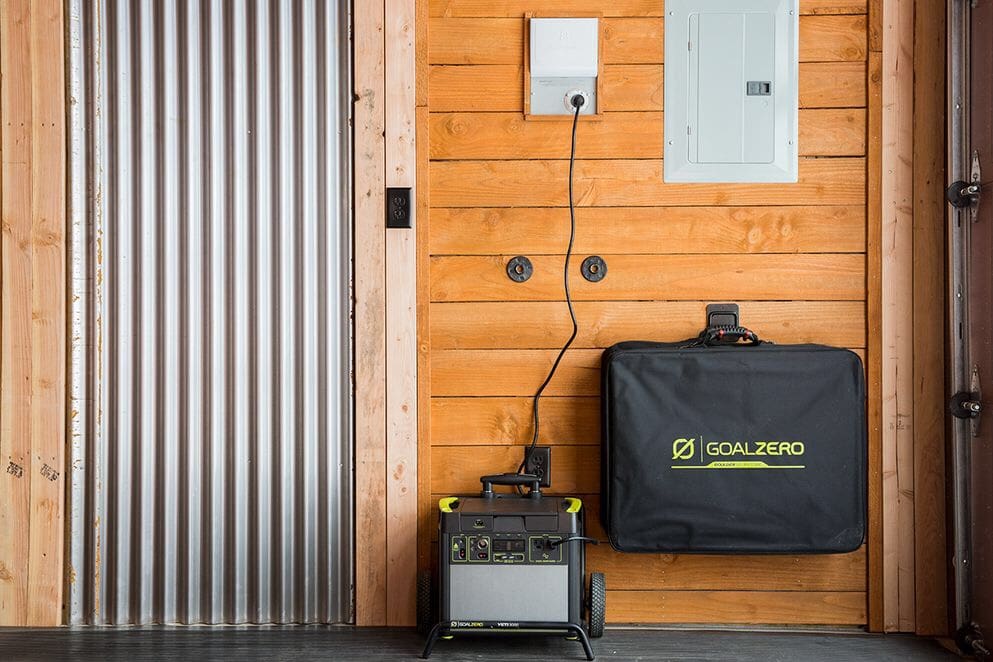Even though SSD’s primary focus is PPE, we do discuss power systems, and occasionally prepping. Considering the number of storms and other unforeseen circumstances which knock out power, everyone should consider alternatives to the shore power we all enjoy here in the front country.

Goal Zero explains that when access to the power grid goes down, the flow of power to your home’s electrical system from the distribution transformer is interrupted. Once installed, the Home Integration Kit acts as a switch between two power sources, the main source being the distribution transformer and the secondary source being the power station.
When installed with a Yeti portable power station, the HIK allows you to provide backup power for up to four 120V circuits in your house. Determining which circuits those should be isn’t an exact science and will vary from household to household. Keep in mind that, due to the inherent risks involved in working with your electrical system, you must get the HIK installed by a certified electrician.
Generally, there are a number of circuits that tend to be well-suited for backup power across a variety of home setups. We recommend the following:
• Run a light or two in your most important room(s). This could be a centrally-located living or family room where there is space to gather and wait out the storm, as well as a highly-utilized room like the kitchen or bathroom.
• Power your garage door opener. In the event of an emergency, people often think about hunkering down and staying inside. But what if you need to get out? Making sure you have enough power to easily get out of your house if need be is important.
• Power your fridge in order to keep food fresh.
• Back up an outlet that supplies power to your WiFi router so you can stay connected and keep in touch through a storm.
Once you have selected your circuits and had the HIK installed by an electrician, it’s quite easy to use. The HIK is simply plugged into the AC output of a Yeti power station via an extension cable and you are able to flip the switches for each circuit from the grid to Yeti power in an outage. An informative display on the Yeti allows you to monitor runtime, input/out, and battery levels. If your Yeti is mobile app enabled, you can even monitor power usage from afar.
In the event the power grid is unavailable, the Yeti portable power station can be recharged via solar panels.
www.goalzero.com/shop/yeti-accessories/yeti-home-integration-kit
Tags: Goal Zero


Just for clarity, no relation?
to your mom? Yes your mom is a goal zero.
‘Yeti’ is the model name of the Goal Zero product in this case. No connection to the cooler brand Yeti
I think 4 15A circuits is fairly optimistic. Their largest power station puts out 12.5A 120VAC (unless I misread the website) I’d choose very carefully about what circuits you put on that thing. If I had a small cabin somewhere itd be legit but it’s a little undersized for a modern house.
I’ve had bad luck with Goal zero batteries. The chargers worked fine, though they switch connectors around a lot during iterations, making cords obsolete. But, the batteries didn’t hold a charge well and seemed to get worse quickly.
Cheap stuff marketed well, I guess.
I have to agree with redbeard. I have a Yeti 150 and after less than 2 years it appears to have failed or is failing. A week or so ago while charging, it started making a fantastic burning electrical smell and was almost too hot to touch. Their panels are a POS that fail with minor damage.
After seeing the Ascent Solar XD12 on Soldier Systems several months ago, that is now my panel of choice. Super light, super durable, little pricy but worth it for the benefits.